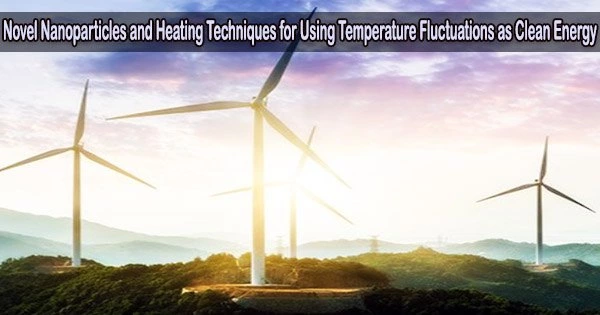The process of pyro-catalysis (pyroelectric catalysis) can transform temperature variations in the environment into pure chemical energy, such as hydrogen. But because ambient temperature changes occur slowly, pyro-catalysis is less effective than other popular catalysis methods like photocatalysis.
Recently, utilizing targeted plasmonic heat sources to quickly and efficiently heat up the pyro-catalytic material and allow it to cool down, a team co-led by researchers at City University of Hong Kong (CityU) produced a pyro-catalytic reaction that was noticeably faster and more effective.
The discoveries open up new doors for effective catalysis for biological applications, the removal of pollutants, and the generation of clean energy.
The term “pyro-catalysis” describes the catalysis caused by surface charges in pyroelectric materials that are brought on by temperature changes. It is an environmentally friendly, self-powered catalytic method that collects discarded thermal energy from the surroundings. It has drawn increasing interest in the creation of reactive oxygen species, which can then be employed for color treatment and disinfection.
However, most of the currently available pyroelectric materials are not efficient if the ambient temperature doesn’t change much over time. Increasing the number of temperature cycling is a more practical technique to boost the pyro-catalytic efficiency because the environmental temperature change rate is frequently constrained.
However, employing standard heating techniques to accomplish numerous thermal cycling in the pyro-catalyst in a short amount of time is quite difficult.
Challenge of multiple thermal cycling
A research team co-led by Dr. Lei Dangyuan, Associate Professor in the Department of Materials Science and Engineering (MSE) at CityU, recently overcame this obstacle using a novel strategy of combining pyroelectric materials and the localized thermo-plasmonic effect of noble metal nanomaterials.
The collective oscillation of free electrons is supported by the plasmonic nanostructures, which have the ability to absorb light and swiftly transform it into heat. Due to its nanoscale size, it can quickly and effectively modify the temperature of a small space without causing a great deal of heat loss.
Consequently, the localized heat generated by the thermo-plasmonic nanostructures can be easily fine-tuned and turned on or off by external light irradiation within an ultrashort time interval.
In their experiments, the team selected a typical pyro-catalytic material, called barium titanate (BaTiO3) nanoparticles. The coral-like BaTiO3 nanoparticles are decorated with gold nanoparticles as plasmonic heat sources; the gold nanoparticles can convert the photons directly from a pulsed laser to heat.
The experiment’s findings showed that gold nanoparticles operate as a localized heat source that is quick, dynamic, and adjustable without rising the temperature around them. This effectively and noticeably accelerates the BaTiO3 nanoparticles’ overall pyro-catalytic reaction rate.
Gold nanoparticles as a localized heat source
By using this method, the researchers increased the rate at which pyro-catalytic hydrogen was produced, hastening the development of pyro-catalysis’s practical applications. The plasmonic pyroelectric nano-reactors demonstrated an accelerated pyro-catalytic hydrogen production rate of about 133.1±4.4µmol·g-1·h-1 through thermo-plasmonic local heating and cooling under irradiation of a nanosecond laser at the wavelength of 532nm.
Additionally, the nanosecond laser employed in the experiment had a repetition rate of 10Hz, which meant that 10 pulses of light were shone onto the catalyst every second in order to complete 10 heating and cooling cycles. This suggests that the pyroelectric catalytic performance could be enhanced in the future by raising the laser pulse repetition rate.
The study group thinks that the findings of their experiment have shown a fresh strategy for enhancing pyro-catalysis by creating a novel pyroelectric composite system with other photothermal materials. This significant development will increase the viability of pyro-catalysis’s use in the future for the treatment of pollutants and the creation of clean energy.





